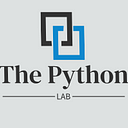Member-only story
Fibonacci Series Generation: Guide to generating the Fibonacci series using iterative and recursive approaches in Python
The Fibonacci series is a captivating sequence of numbers that exhibits a remarkable pattern. Each number in the series is the sum of the two preceding numbers, starting with 0 and 1. The Fibonacci series unfolds as follows: 0, 1, 1, 2, 3, 5, 8, 13, 21, 34, 55, 89, 144, 233, 377, and so on. This intriguing sequence finds its applications in various fields such as mathematics, computer science, and nature.
In this comprehensive Python tutorial, we will embark on a journey to explore and understand the Fibonacci series. Our primary focus will be on implementing the series generation using two different approaches: iterative and recursive. Along the way, we will not only generate the series but also visualize it using two popular plotting libraries: Matplotlib and Plotly.
Next, we will walk through the code step-by-step, explaining each component and highlighting its role in generating the series. We will also demonstrate how to plot the iterative and recursive Fibonacci series using Matplotlib and Plotly, creating visually appealing and informative plots. This will allow us to compare and contrast the two approaches visually.
By the end of this tutorial, you will have a comprehensive understanding of the Fibonacci series, as well as the ability to generate and visualize it using both iterative and recursive approaches. You will be equipped with valuable Python programming skills and the confidence to apply this knowledge to other scenarios and explore the boundless possibilities that the Fibonacci series offers.

Table of Contents
- Building the Foundation: Import libraries. Creating Classes and Objects
- Implementing Fibonacci Series Generation using iterative and recursive approaches
- Visualizing Fibonacci Series Generation:
- Conclusion
1. Building the Foundation: Importing Libraries and Creating Classes and Objects
To lay the groundwork for implementing the Fibonacci series generation program, we need to import the necessary libraries and…
